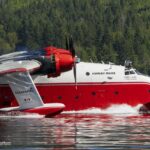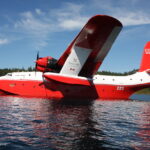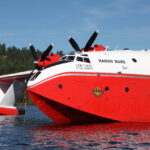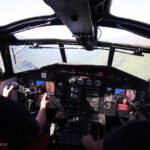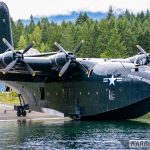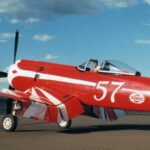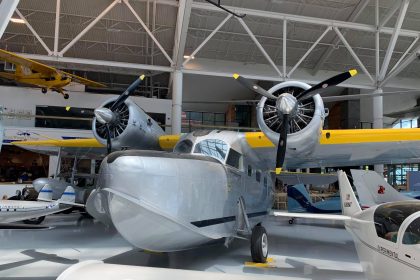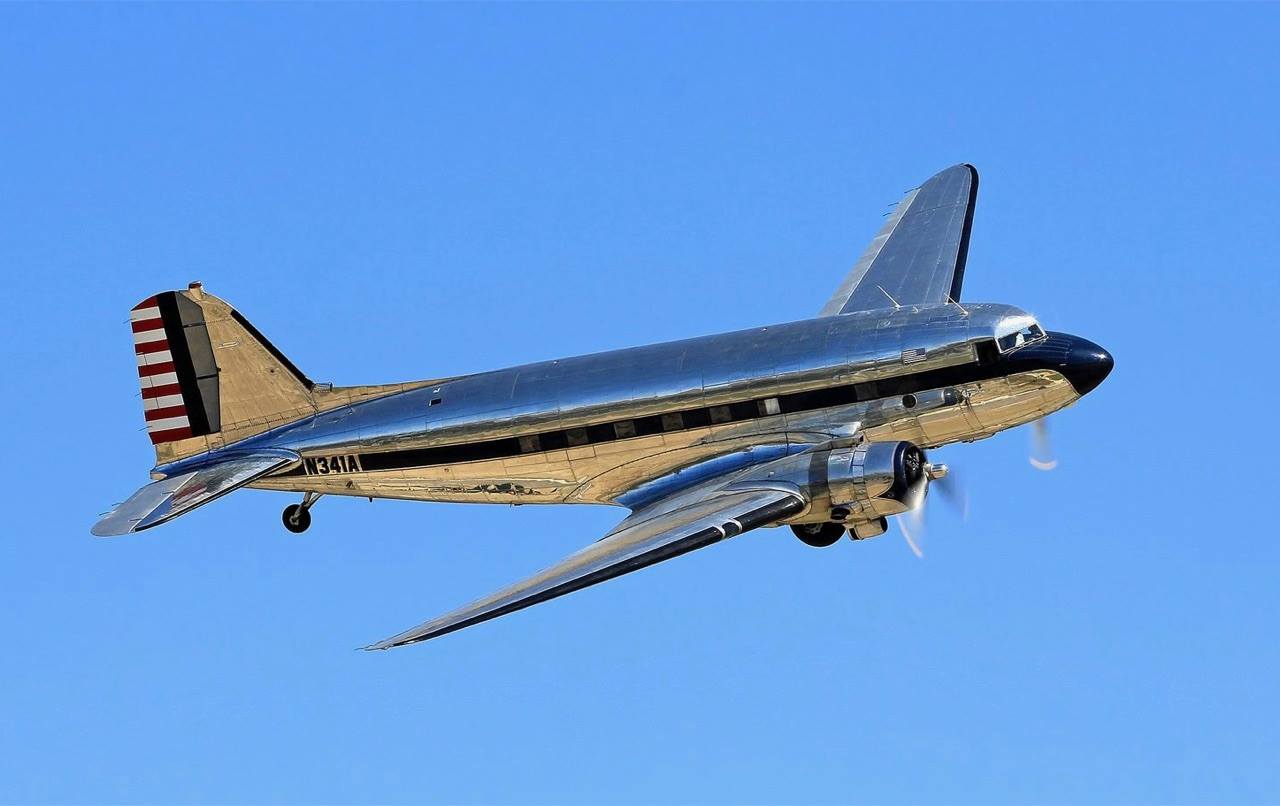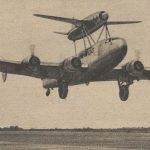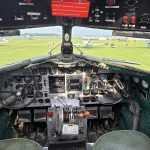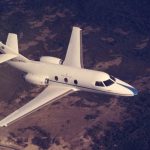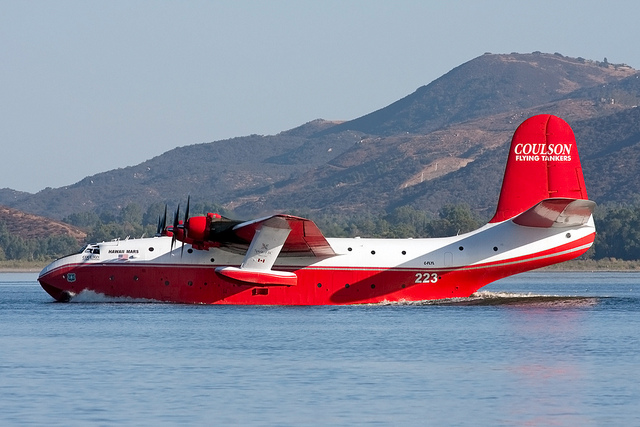In a remarkable return to the skies, the Hawaii Mars, one of the world’s largest and most iconic flying boats, has taken flight again for the first time since 2016. This historic event marks a significant milestone in the plan to fly the airplane to the British Columbia Aviation Museum later in the month.
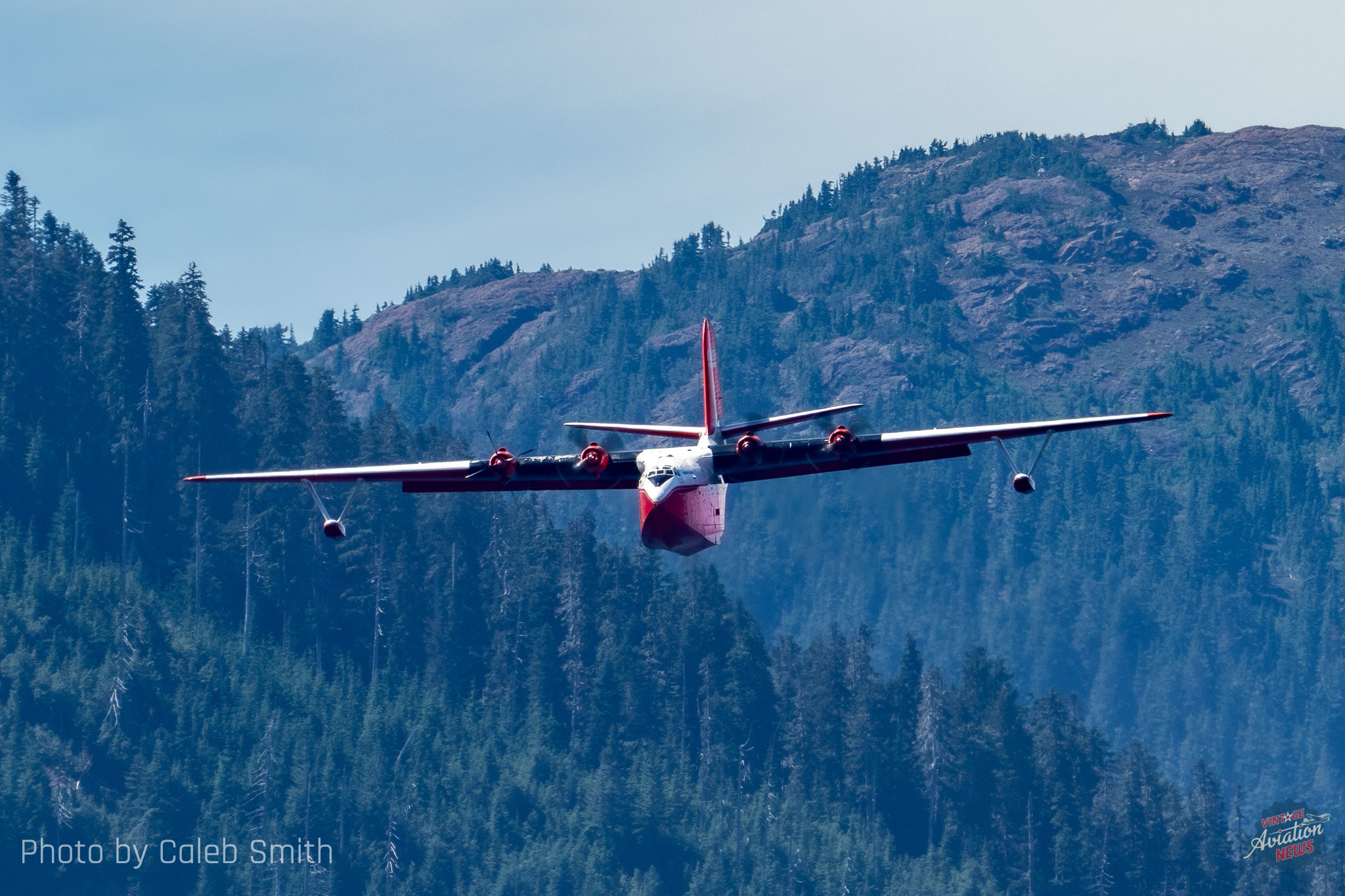
After a series of successful taxi tests, on August 1st, the Martin JRM Mars took flight from its long-time home of Sproat Lake on Vancouver Island, British Columbia just before 2 pm local time that day. During this first test flight in eight years, the aircraft had to shut down its number 4 engine before reaching the planned altitude of 6,000 feet. Despite this minor setback, Hawaii Mars returned safely after a brief circuit around the lake, landing approximately 15 minutes after takeoff. With the issue resolved, Hawaii Mars successfully flew again on August 2nd.
As reported HERE back in March, the BC Aviation Museum acquired the iconic flying boat from Coulson Aviation, which had used the aircraft on firefighting duties for many years. The behemoth’s final flight to the museum in Victoria, BC will be a multi-phase process which will, of course, require passing Transport Canada airworthiness inspections, crew training, and test flights.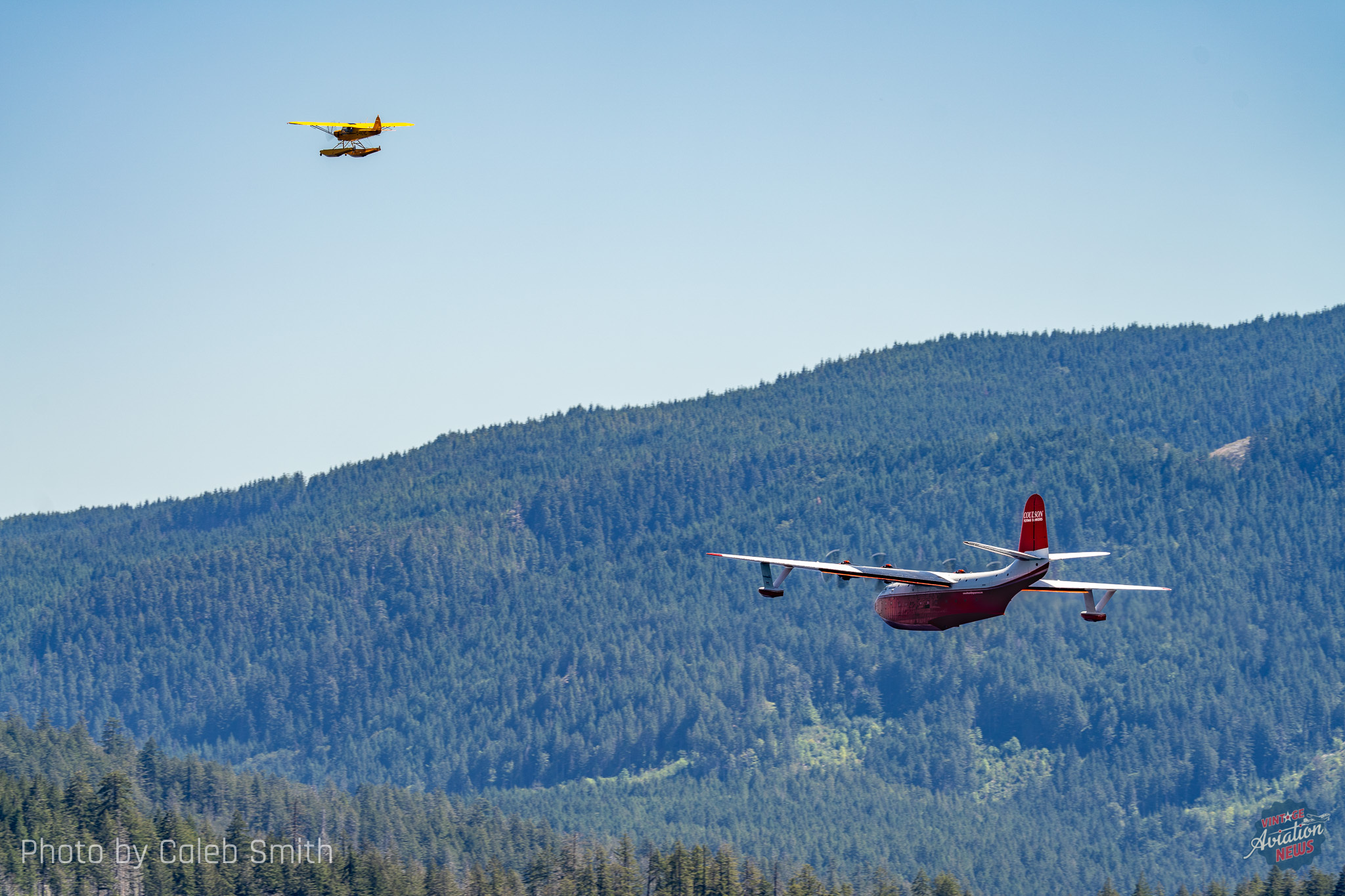
After decades of service, Hawaii Mars retired in 2015, with its last significant operational flight taking place in 2016. Following its retirement, Coulson Aviation preserved the aircraft and displayed it as a static exhibit at Sproat Lake, the massive flying boat symbolizing a bygone era of aviation and firefighting. Despite its grounding, enthusiasts and aviation historians continued to celebrate its contributions and advocate for its preservation.
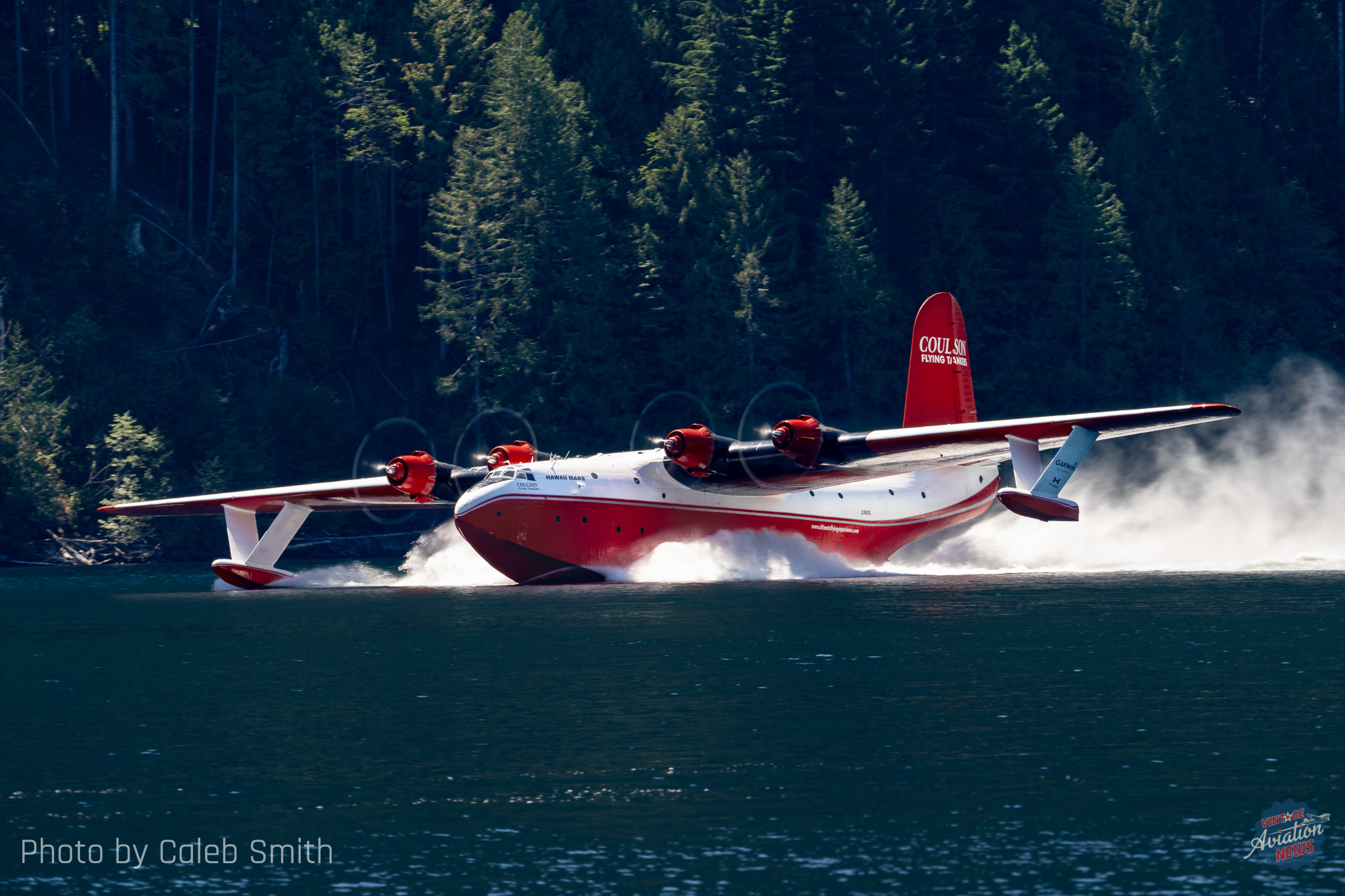
Acquiring the Mars was a massive coup for the BC Aviation Museum, as this interview with Save The Mars Project Manager Richard Modsell explains. It is a testament to how one person’s perseverance can sometimes provide an avenue to unexpected success.
Richard Modsell’s short video (see below) describes the origin story behind the BC Aviation Museum’s huge rescue plan to bring the Martin Mars water bomber home to their campus beside Victoria International Airport in Victoria, British Columbia.
Hawaii Mars’s ferry flight to the museum, tentatively scheduled for August 10th this year, will likely mark the type’s final ever journey skyward under its own power.





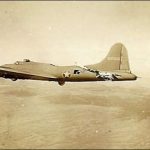
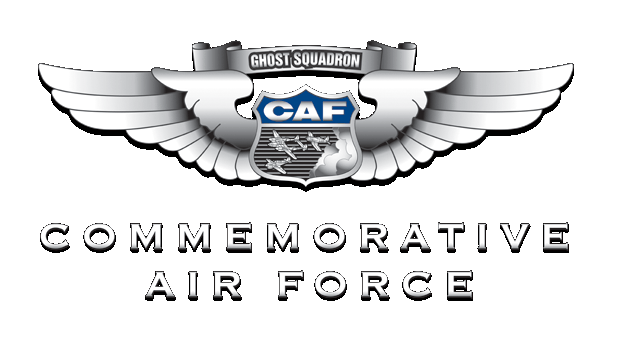
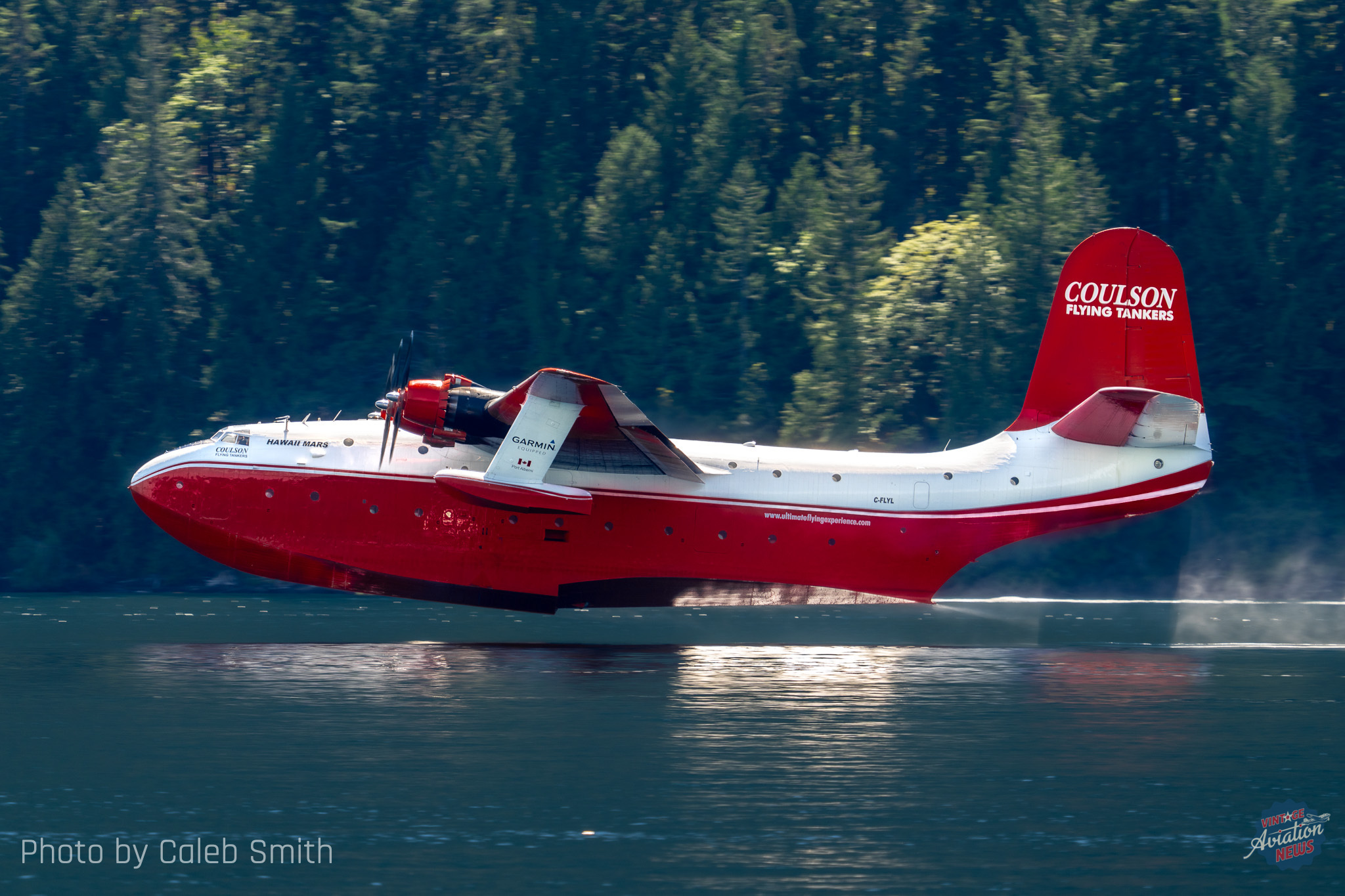

![Additional Taxi Tests For The Hawaii Mars [VIDEO] 10 Martin Mars Heath Moffatt Photo 667 copy](https://vintageaviationnews.com/wp-content/uploads/Martin-Mars_-Heath-Moffatt-Photo-667-copy-150x150.jpg)
